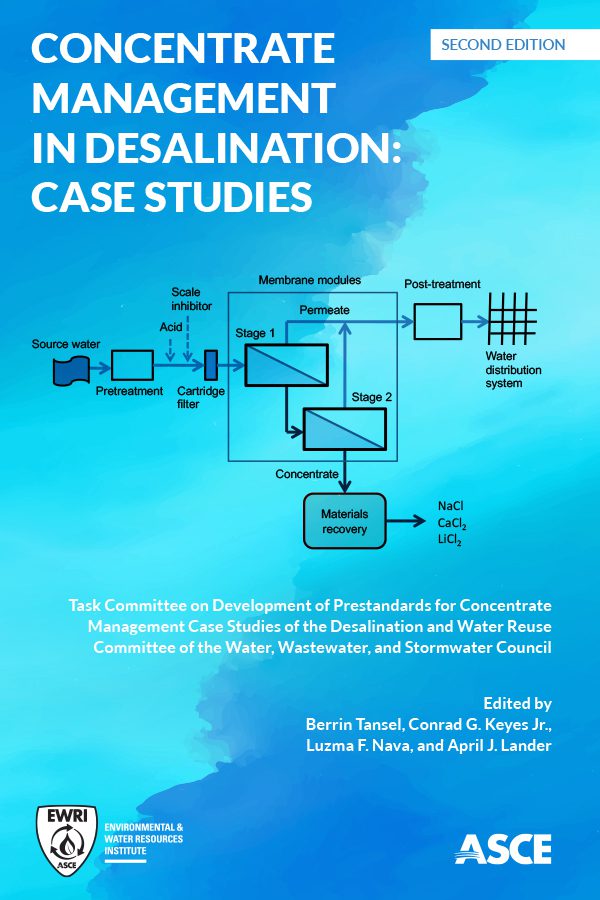New ASCE Publication Examines Concentrate Management and Disposal in Desalination

Reston, Va. – Water scarcity is an ever-expanding global problem. Improved desalination techniques are one way to address this scarcity by harnessing brackish water as an alternate resource, especially for inland communities. The American Society of Civil Engineers (ASCE) newest publication, Concentrate Management in Desalination: Case Studies, Second Edition, reviews the state-of-the-practice for managing concentrate streams resulting from desalination processes.
Many facets of concentrate management in desalination are examined in this book, including process design and configuration; regulatory setting; environmental, climate change, and sustainability issues; and economic evaluation of projects. Thirteen case studies are offered to demonstrate different techniques for disposing of concentrates associated with the following types of projects: ocean and bays discharge, sanitary sewer or surface water disposal, deep-well injection, zero liquid discharge (ZLD) or near ZLD, and land disposal and/or evaporation ponds.
Environmental engineers, water practitioners, and managers responsible for the design, operation, research, and evaluation of regional desalination and water reuse facilities will find a wealth of practical information in this updated and expanded edition.
To purchase online, visit the ASCE Bookstore
Limited review copies are available for book reviews. Please contact Leslie Connelly, [email protected].
ABOUT THE AMERICAN SOCIETY OF CIVIL ENGINEERS
Founded in 1852, the American Society of Civil Engineers represents more than 150,000 civil engineers worldwide and is America’s oldest national engineering society. ASCE works to raise awareness of the need to maintain and modernize the nation’s infrastructure using sustainable and resilient practices, advocates for increasing and optimizing investment in infrastructure, and improve engineering knowledge and competency.


